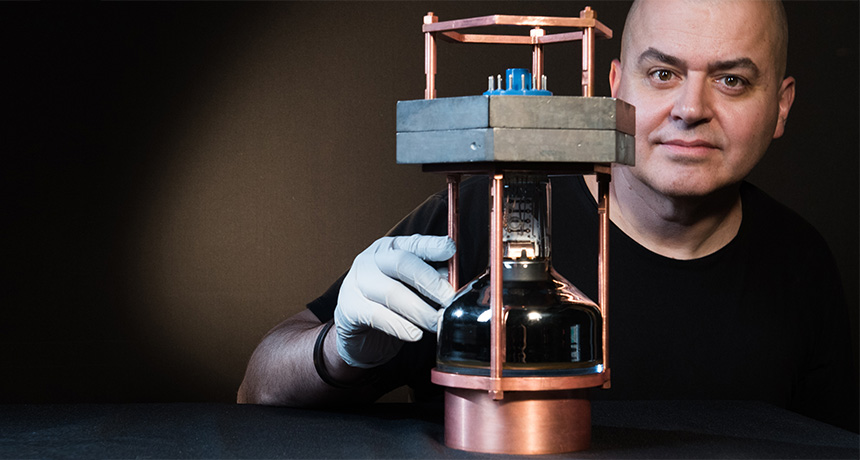Neutrinos seen scattering off an atom’s nucleus for the first time
Warning: Undefined array key 0 in /home/www/www.sknl.cn/wp-includes/media.php on line 779
Warning: Undefined array key 0 in /home/www/www.sknl.cn/wp-includes/media.php on line 785
Warning: Undefined array key 1 in /home/www/www.sknl.cn/wp-includes/media.php on line 785
Warning: Undefined array key 0 in /home/www/www.sknl.cn/wp-includes/media.php on line 787
Warning: Undefined array key 1 in /home/www/www.sknl.cn/wp-includes/media.php on line 787
Warning: Undefined array key 0 in /home/www/www.sknl.cn/wp-includes/media.php on line 790
Warning: Undefined array key 1 in /home/www/www.sknl.cn/wp-includes/media.php on line 790
Warning: Undefined array key 0 in /home/www/www.sknl.cn/wp-includes/media.php on line 779
Warning: Undefined array key 0 in /home/www/www.sknl.cn/wp-includes/media.php on line 785
Warning: Undefined array key 1 in /home/www/www.sknl.cn/wp-includes/media.php on line 785
Warning: Undefined array key 0 in /home/www/www.sknl.cn/wp-includes/media.php on line 787
Warning: Undefined array key 1 in /home/www/www.sknl.cn/wp-includes/media.php on line 787
Warning: Undefined array key 0 in /home/www/www.sknl.cn/wp-includes/media.php on line 790
Warning: Undefined array key 1 in /home/www/www.sknl.cn/wp-includes/media.php on line 790
Warning: Undefined array key 0 in /home/www/www.sknl.cn/wp-includes/media.php on line 779
Warning: Undefined array key 0 in /home/www/www.sknl.cn/wp-includes/media.php on line 785
Warning: Undefined array key 1 in /home/www/www.sknl.cn/wp-includes/media.php on line 785
Warning: Undefined array key 0 in /home/www/www.sknl.cn/wp-includes/media.php on line 787
Warning: Undefined array key 1 in /home/www/www.sknl.cn/wp-includes/media.php on line 787
Warning: Undefined array key 0 in /home/www/www.sknl.cn/wp-includes/media.php on line 790
Warning: Undefined array key 1 in /home/www/www.sknl.cn/wp-includes/media.php on line 790
Warning: Undefined array key 0 in /home/www/www.sknl.cn/wp-includes/media.php on line 811
Warning: Undefined array key 1 in /home/www/www.sknl.cn/wp-includes/media.php on line 811
Warning: Undefined array key 0 in /home/www/www.sknl.cn/wp-includes/media.php on line 70
Warning: Undefined array key 1 in /home/www/www.sknl.cn/wp-includes/media.php on line 71
Warning: Undefined array key 0 in /home/www/www.sknl.cn/wp-includes/media.php on line 70
Warning: Undefined array key 1 in /home/www/www.sknl.cn/wp-includes/media.php on line 71

Famously sneaky particles have been caught behaving in a new way.
For the first time, scientists have detected neutrinos scattering off the nucleus of an atom. The process, predicted more than four decades ago, provides a new way to test fundamental physics. It will also help scientists to better characterize the neutrino, a misfit particle that has a tiny mass and interacts so feebly with matter that it can easily sail through the entire Earth.
The detection, reported online August 3 in Science, “has really big implications,” says physicist Janet Conrad of MIT, who was not involved with the research. It fills in a missing piece of the standard model, the theory that explains how particles behave: The model predicts that neutrinos interact with nuclei. And, says Conrad, the discovery “opens up a whole new area of measurements” to further test the standard model’s predictions.
Scientists typically spot neutrinos when they interact with a single proton or neutron. But the new study measures “coherent” scattering, in which a low-energy neutrino interacts with an entire atomic nucleus at once, ricocheting away and causing the nucleus to recoil slightly in response.
“It’s exciting to measure it for the first time,” says physicist Kate Scholberg of Duke University, spokesperson for the collaboration — named COHERENT — that made the new finding.
In the past, neutrino hunters have built enormous detectors to boost their chances of catching a glimpse of the particles — a necessity because the aloof particles interact so rarely. While still rare, coherent neutrino scattering occurs more often than previously detected types of neutrino interactions. That means detectors can be smaller and still catch enough interactions to detect the process. COHERENT’s detector, a crystal of cesium and iodine, weighs only about 15 kilograms. “It’s the first handheld neutrino detector; you can just carry it around,” says physicist Juan Collar of the University of Chicago.
Collar, Scholberg and colleagues installed their detector at the Spallation Neutron Source at Oak Ridge National Laboratory in Tennessee. The facility generates bursts of neutrons and, as a by-product, produces neutrinos at energies that COHERENT’s detector can spot. When a nucleus in the crystal recoils due to a scattering neutrino, a flash of light appears and is captured by a light sensor. The signal of the recoiling nucleus is incredibly subtle — like detecting the motion of a bowling ball when hit by a ping-pong ball — which is why the effect remained undetected until now.
The amount of scattering the researchers saw agreed with the standard model. But such tests are still in their early stages, says physicist Leo Stodolsky of the Max Planck Institute for Physics in Munich, who was not involved with the research. “We’re looking forward to more detailed studies to see if it really is accurately in agreement with the expectations.” Physicists hope to find a place where the standard model breaks down, which could reveal new secrets of the universe. More precise tests may reveal discrepancies, he says. “That would be extremely interesting.”
Measuring coherent neutrino scattering could help scientists understand the processes that occur within exploding stars, or supernovas, which emit huge numbers of neutrinos (SN: 02/18/17, p. 24). The process could be used to detect supernovas as well — if a supernova explodes nearby, scientists could spot its neutrinos scattering off nuclei in their detectors.
Similar scattering might also help scientists detect dark matter, an invisible source of mass that pervades the universe. Dark matter particles could scatter off atomic nuclei just as neutrinos do, causing a recoil. The study indicates that such recoils are detectable — good news since several dark matter experiments are currently attempting to measure recoils of nuclei (SN: 11/12/16, p. 14). But it also suggests a looming problem: As dark matter detectors become more sensitive, neutrinos bouncing off the nuclei will swamp any signs of dark matter.
Coherent neutrino scattering detectors could lead to practical applications as well: Small-scale neutrino detectors could eventually detect neutrinos produced in nuclear reactors to monitor for attempts to develop nuclear weapons, for example.
Physicist Daniel Freedman of MIT, who predicted in 1974 that neutrinos would scatter off nuclei, is pleased that his prediction has finally been confirmed. “It’s a thrill.”
